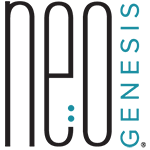Few ingredients provoke as much discussion in skin care as retinol and retinoate. Adorning the labels of serums, creams, and oils within our bathroom cabinets, these vitamin A derivatives are lauded for their potent wrinkle-smoothing and skin-refining prowess.
This article aims to demystify the differences between retinol and its younger sibling, retinoate, and provide guidance on which ingredient is a better choice for your nightly skincare routine.
Understanding Retinol
The Origin Story of Retinol
Retinol, part of the retinoid family, is a derivative of vitamin A that naturally occurs in the skin in small amounts.
It found its way into the world of skincare in the 1970s, quickly rising through the ranks to become one of the most celebrated over-the-counter anti-aging ingredients that remains popular in the skin care industry today.
Retinol Benefits and Drawbacks
When applied topically, retinol undergoes a conversion process within the skin, turning into retinoic acid—the active form of vitamin A responsible for changing the behavior of aged and damaged skin cells.
Retinol can’t work in your skin until it undergoes this process. Once it does, by boosting cell turnover, retinol helps to fade dark spots, smooth fine lines, and maintain a plump, even skin tone.
Despite its impeccable anti-aging record, retinol is not without its pitfalls. This powerhouse ingredient can sometimes be too potent for sensitive skin, causing dryness, redness, and flaking.
Unveiling Retinoate
The Newcomer with a Gentler Touch
Retinoate is a member of the retinoid family, developed to nod to retinol’s efficacy but with a kinder approach. Sometimes called hydroxypinacolone retinoate (HPR), retinoate represents a breakthrough in skincare technology, offering the benefits of retinol with less irritation.
Delving into Retinoate’s Mechanism
What sets retinoate apart is its conversion process, or lack thereof—this compound can bind directly to retinoid receptors on the skin cells, bypassing the need for conversion into retinoic acid. With a predictable pathway to activation, retinoate can perform its anti-aging duties with precision and less downtime for skin barrier recovery. This means it can start working immediately when applied to the skin and then continues to provide delayed benefits as the retinoate is then further absorbed into the skin over time.
Why Retinoate Reigns
Retinoate’s key advantage over retinol is its reported tolerance on sensitive skin. It works more gently, minimizing the potential for adverse effects while still delivering the coveted results in both the short and long term.
Choosing the Right Product
The Winning Ingredient
A gentler option to retinol, with less irritation, but with all the same anti-aging benefits? Yes, please.
Retinoate is our recommended ingredient when considering adding a Vitamin A or other retinol-based products to your routine. It can be used on sensitive skin, and can therefore be used more regularly in your routine as opposed to just a few times a week. Consistency is the key to getting the results you want.
Boosting cellular turnover, helping to fade dark spots, and smoothing fine lines and wrinkles with both short and long term benefits means retinoate has clearly emerged as the ingredient of choice in the Vitamin A family to help address aging skin concerns.
Skin Restore Serum | Vitamin A Retinoate
NeoGenesis has a serum that checks all the typical retinol boxes – but features retinoate so you can use it more consistently and with less chance for skin irritation.
Packed with antioxidants from HPR (retinoate), sunflower seed oil, and carrot oil and extract, this skin-restoring serum can improve the appearance of fine lines and wrinkles, supports healthy collagen levels, and can make the skin look healthier, smoother and more vibrant.
Directions for Use:
- Start with NeoGenesis Cleanser
- Apply your favorite NeoGenesis serum
- Follow with Eye Serum
- Apply 1 pump of Skin Restore Serum on dry or damp skin and let it absorb
- Use your favorite NeoGenesis moisturizer (Barrier Renewal Cream is suggested)
Incorporating into Your Routine
Introducing a retinoate-based product into your routine should be a gradual affair. Start by using it once or twice weekly, slowly increasing frequency as your skin acclimates.
Retinoate works best on freshly cleansed skin and applied before heavier creams or oils. We recommend Incorporating retinoate products in the evening as part of your skincare routine.
Conclusion
Retinoate has emerged as one of the best new skincare ingredients for aging concerns. When used appropriately, consistently, and conscientiously, it can be a valuable addition to your nightly skincare regimen. Add NeoGenesis Skin Restore Serum to your routine today, or use our clinic locator tool to find a skin care professional in your area and build a routine that’s customized to your skin’s needs.
Do you want to learn more? Follow NeoGenesis on Facebook, Instagram, LinkedIn and YouTube.





